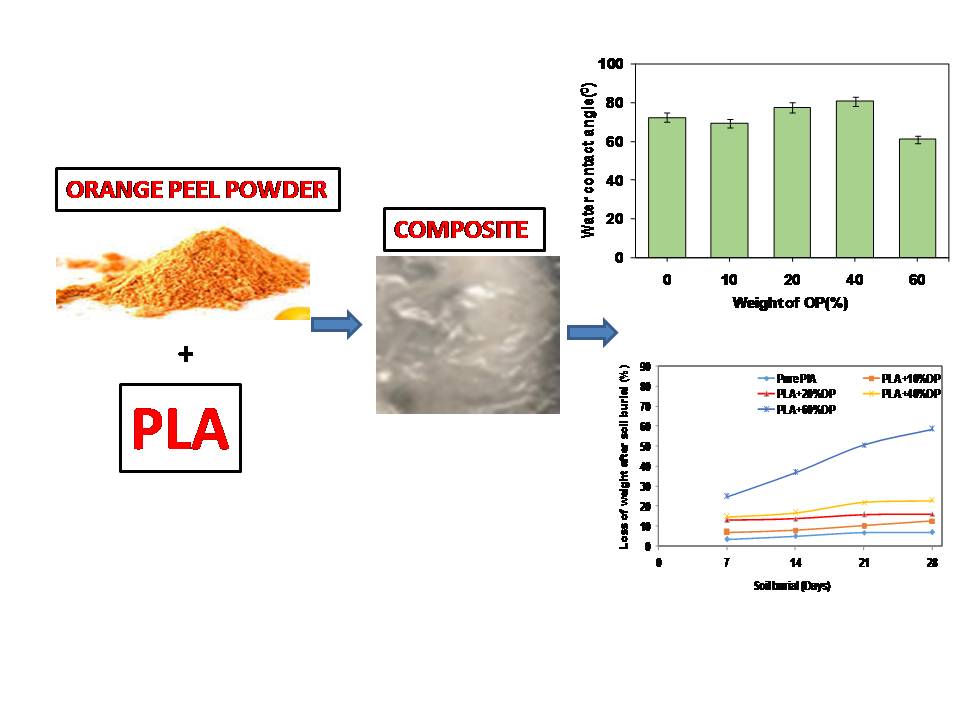
One of the biggest environmental issues has been the use and disposal of traditional fossil-based plastic, which is not biodegradable and uses a lot of energy in its production. Poly lactic acid (PLA) has received a lot of attention as an environmentally friendly substitute due to the fact that it is a renewable polymer made from natural sources with qualities equivalent to traditional plastics and minimal environmental cost. Orange peel waste is abundantly produced and contains many important components, but its prospective uses in fortifying the PLA matrix have received little attention. Synthesized from dried orange peel waste, orange peel powder (OP) was added to PLA solution in this investigation. Finally, thin films were produced using the solution casting method from PLA/OP solutions with varying OP loadings (0, 10, 20, 40, and 60 wt%). The addition of OP to PLA has reduced its tensile strength and Young's modulus, but has increased its elongation at break by 49–737%, as shown by tensile test results. Analyses of water contact angles reveal that hydrophilic OP has altered the hydrophobicity of PLA's surface, with contact angles ranging from 70.120 to 88.180: nevertheless, greater loadings result in a reduction in surface energy. After 28 days, the PLA/60 wt% OP composite has the highest biodegradation performance, with a weight loss of 59.43%. This suggests that the inclusion of OP enhances the biodegradability of PLA.
Total file downloads: 12